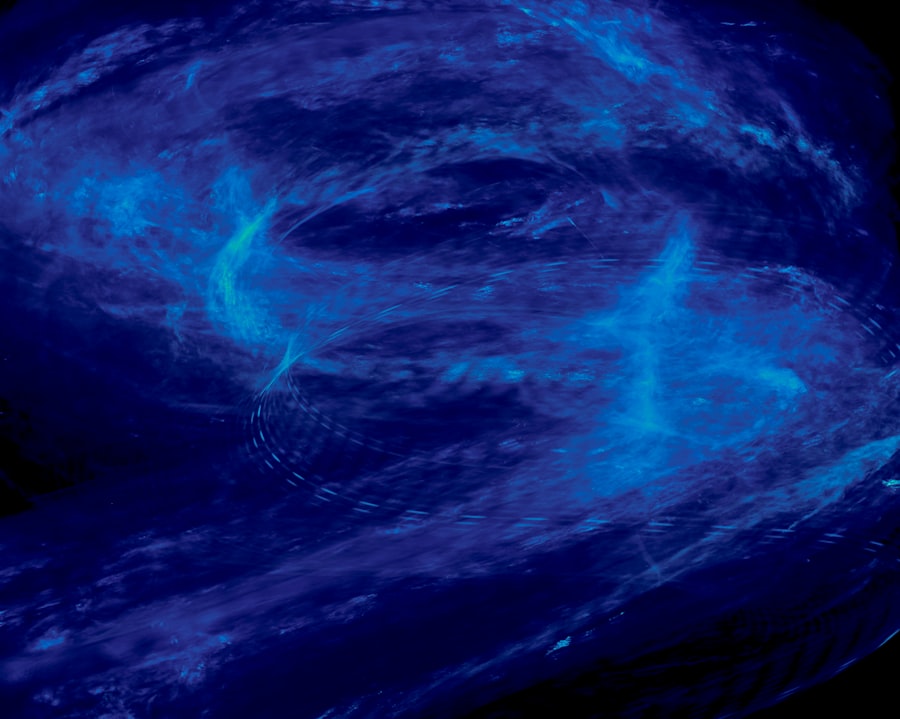Geomagnetic jerks and anomalies represent fascinating phenomena within the realm of geophysics, capturing the attention of scientists and researchers alike. These sudden changes in the Earth’s magnetic field can have profound implications for both natural systems and human technology. As the Earth’s magnetic field is not static but rather dynamic, it undergoes various fluctuations that can be categorized into jerks and anomalies.
Understanding these phenomena is crucial for comprehending the broader implications they may have on navigation systems, satellite operations, and even climate patterns. The study of geomagnetic jerks and anomalies is not merely an academic pursuit; it has real-world applications that affect daily life. For instance, disruptions in the magnetic field can lead to inaccuracies in navigation systems, which rely heavily on magnetic compasses.
Furthermore, these geomagnetic events can influence the behavior of charged particles in the atmosphere, potentially impacting communication systems and power grids. As such, a comprehensive understanding of geomagnetic jerks and anomalies is essential for mitigating risks associated with these unpredictable changes.
Key Takeaways
- Geomagnetic jerks and anomalies are sudden changes in the Earth’s magnetic field that can have significant impacts on the planet and technology.
- Understanding the Earth’s magnetic field is crucial in comprehending the causes and effects of geomagnetic jerks and anomalies.
- Geomagnetic jerks are rapid changes in the Earth’s magnetic field that occur over a short period of time, leading to disruptions in navigation systems and communication networks.
- Factors contributing to geomagnetic jerks include changes in the Earth’s core, interactions between the Earth and the solar wind, and external magnetic influences.
- Geomagnetic jerks can have impacts on Earth’s climate, animal migration patterns, and technological systems, making it important to detect and monitor these anomalies for early warning and mitigation.
Understanding the Earth’s Magnetic Field
The Earth’s magnetic field is a complex and dynamic entity generated by the movement of molten iron and other metals in the outer core. This geodynamo process creates a magnetic field that extends far beyond the surface of the Earth, forming a protective shield against solar winds and cosmic radiation. The magnetic field is characterized by its dipole nature, with a north and south pole, but it is also subject to variations over time due to internal and external factors.
The magnetic field is not uniform; it exhibits local anomalies where the strength and direction of the magnetic field deviate from expected values. These anomalies can be caused by geological formations, such as mineral deposits or tectonic activity, which can influence the magnetic properties of the crust. Understanding these variations is crucial for geophysical research, as they can provide insights into the Earth’s interior structure and dynamics.
What are Geomagnetic Jerks?

Geomagnetic jerks are sudden changes in the Earth’s magnetic field that occur over a relatively short period, typically on the order of months to years. These abrupt shifts are characterized by a rapid change in the rate of secular variation, which refers to the long-term changes in the magnetic field’s intensity and direction. Unlike gradual changes that occur over decades or centuries, geomagnetic jerks are marked by their swift onset and can significantly alter the magnetic landscape.
The identification of geomagnetic jerks is often based on data collected from observatories and satellites that monitor the Earth’s magnetic field. These events are typically recognized through anomalies in the data that indicate a departure from expected trends. The study of geomagnetic jerks is essential for understanding the underlying processes that govern the Earth’s magnetic field and for predicting future changes.
Causes and Factors Contributing to Geomagnetic Jerks
| Causes and Factors Contributing to Geomagnetic Jerks |
|---|
| 1. Changes in the Earth’s core |
| 2. Interaction between the Earth’s core and mantle |
| 3. External magnetic influences from the Sun |
| 4. Tectonic plate movements |
| 5. Variations in the Earth’s magnetic field |
The causes of geomagnetic jerks are still a subject of ongoing research, but several factors have been identified as potential contributors. One primary factor is the complex interplay between the Earth’s core dynamics and its mantle. The movement of molten iron within the outer core can lead to changes in the magnetic field’s configuration, resulting in sudden shifts known as jerks.
Another contributing factor may be related to interactions between the Earth’s magnetic field and external forces, such as solar activity. Solar storms can induce currents in the ionosphere, which may interact with the geomagnetic field and lead to abrupt changes. Additionally, tectonic activity and geological processes within the Earth’s crust can also play a role in influencing local magnetic fields, potentially triggering geomagnetic jerks.
Impacts of Geomagnetic Jerks on Earth and Technology
The impacts of geomagnetic jerks extend beyond mere scientific curiosity; they can have significant consequences for both natural systems and human technology. For instance, sudden changes in the magnetic field can disrupt navigation systems that rely on magnetic compasses, leading to potential hazards in aviation and maritime operations. Furthermore, these jerks can affect satellite operations by altering their orbits or causing communication disruptions.
In addition to technological implications, geomagnetic jerks may also influence natural phenomena such as animal migration patterns. Many species rely on the Earth’s magnetic field for navigation during migration, and sudden shifts could disorient these animals, leading to ecological consequences. Understanding these impacts is vital for developing strategies to mitigate risks associated with geomagnetic jerks.
Detecting and Monitoring Geomagnetic Anomalies

Detecting and monitoring geomagnetic anomalies is crucial for understanding their nature and implications. Various methods are employed to observe changes in the Earth’s magnetic field, including ground-based observatories equipped with magnetometers and satellite missions designed to measure magnetic variations from space. These instruments provide valuable data that researchers use to analyze trends and identify anomalies.
The data collected from these monitoring efforts are essential for creating models that predict future changes in the magnetic field. By analyzing historical data alongside current observations, scientists can gain insights into patterns of geomagnetic behavior and improve their understanding of underlying processes. This ongoing monitoring is vital for both scientific research and practical applications in technology.
Historical Instances of Geomagnetic Jerks
Throughout history, several notable instances of geomagnetic jerks have been documented, providing valuable case studies for researchers. One significant event occurred in 1970 when a sudden change was observed in the Earth’s magnetic field intensity.
Another well-documented instance took place in 1982 when a geomagnetic jerk was identified in data collected from observatories around the world. This event highlighted the global nature of geomagnetic changes and underscored the importance of international collaboration in monitoring these phenomena. Historical instances like these serve as critical reference points for understanding current trends and predicting future geomagnetic behavior.
Geomagnetic Anomalies and Climate Change
The relationship between geomagnetic anomalies and climate change is an area of growing interest among researchers. While direct correlations between geomagnetic events and climate patterns remain complex and not fully understood, some studies suggest that fluctuations in the Earth’s magnetic field may influence atmospheric conditions. For instance, changes in solar radiation due to variations in the magnetic field could impact weather patterns.
Additionally, geomagnetic anomalies may play a role in modulating cosmic ray influx into the atmosphere, which has been linked to cloud formation and climate variability. As scientists continue to explore these connections, understanding how geomagnetic anomalies interact with climate systems could provide valuable insights into both past climate events and future climate scenarios.
Predicting and Forecasting Geomagnetic Jerks
Predicting geomagnetic jerks remains a challenging endeavor due to their sudden nature and complex underlying processes. However, advancements in technology and data analysis techniques have improved researchers’ ability to forecast potential changes in the Earth’s magnetic field. By utilizing historical data alongside real-time observations from monitoring stations and satellites, scientists can develop models that identify patterns indicative of impending jerks.
These predictive models are essential for preparing for potential impacts on technology and natural systems.
Research and Studies on Geomagnetic Anomalies
Ongoing research into geomagnetic anomalies continues to yield new insights into their nature and implications. Scientists employ various methodologies, including numerical simulations, observational studies, and interdisciplinary approaches that integrate geology, physics, and atmospheric science. This multifaceted approach allows researchers to explore different aspects of geomagnetic behavior comprehensively.
Recent studies have focused on understanding how geomagnetic anomalies interact with other geophysical processes, such as tectonic activity or solar influences. By examining these relationships, researchers aim to develop a more holistic understanding of how geomagnetic phenomena impact both Earth’s systems and human technology.
Future Implications and Considerations for Geomagnetic Jerks and Anomalies
As our understanding of geomagnetic jerks and anomalies continues to evolve, several future implications warrant consideration. The increasing reliance on technology that depends on accurate navigation systems highlights the need for ongoing research into geomagnetic behavior. As society becomes more interconnected through technology, even minor disruptions caused by geomagnetic events could have cascading effects on global systems.
Moreover, as climate change continues to be a pressing global issue, understanding how geomagnetic anomalies may influence climate patterns could provide valuable insights into future environmental scenarios. Researchers must remain vigilant in monitoring these phenomena while developing strategies to mitigate potential risks associated with geomagnetic jerks. In conclusion, geomagnetic jerks and anomalies represent complex phenomena with far-reaching implications for both natural systems and human technology.
Continued research into their causes, impacts, and predictive capabilities will be essential for navigating an increasingly interconnected world influenced by these dynamic geophysical processes.
Geomagnetic jerks and anomalies are fascinating phenomena that have intrigued scientists for decades. These sudden changes in the Earth’s magnetic field can have significant implications for navigation systems and our understanding of the planet’s interior dynamics. For those interested in delving deeper into this topic, a related article can be found on XFileFindings, which explores various aspects of geomagnetic phenomena and their potential impacts. You can read more about it by visiting this link. This article provides insights into the latest research and theories surrounding these mysterious geomagnetic events.
WATCH THIS! 🙆 CIA Files: They Know When The Poles Will Flip (And Why They’re Hiding It)
FAQs
What are geomagnetic jerks and anomalies?
Geomagnetic jerks are sudden changes in the Earth’s magnetic field that occur over a short period of time, causing a rapid shift in the magnetic field’s strength and direction. Geomagnetic anomalies are irregularities in the Earth’s magnetic field that deviate from the expected or normal behavior.
What causes geomagnetic jerks and anomalies?
The exact cause of geomagnetic jerks and anomalies is not fully understood, but they are believed to be related to processes occurring in the Earth’s core, such as the movement of molten iron and other materials. External factors such as solar activity and interactions with the solar wind can also influence the Earth’s magnetic field.
How are geomagnetic jerks and anomalies measured and monitored?
Geomagnetic jerks and anomalies are measured and monitored using a network of ground-based magnetic observatories and satellite-based instruments. These instruments continuously record and analyze changes in the Earth’s magnetic field, providing valuable data for scientists to study and understand these phenomena.
What are the potential impacts of geomagnetic jerks and anomalies?
Geomagnetic jerks and anomalies can have various impacts, including disruptions to navigation systems, communication networks, and electrical power grids. They can also affect the behavior of migratory animals and impact the accuracy of magnetic-based technologies and instruments.
Can geomagnetic jerks and anomalies be predicted?
Currently, geomagnetic jerks and anomalies cannot be reliably predicted in advance. However, ongoing research and monitoring efforts aim to improve our understanding of these phenomena and develop better predictive models to anticipate and mitigate their potential impacts.
